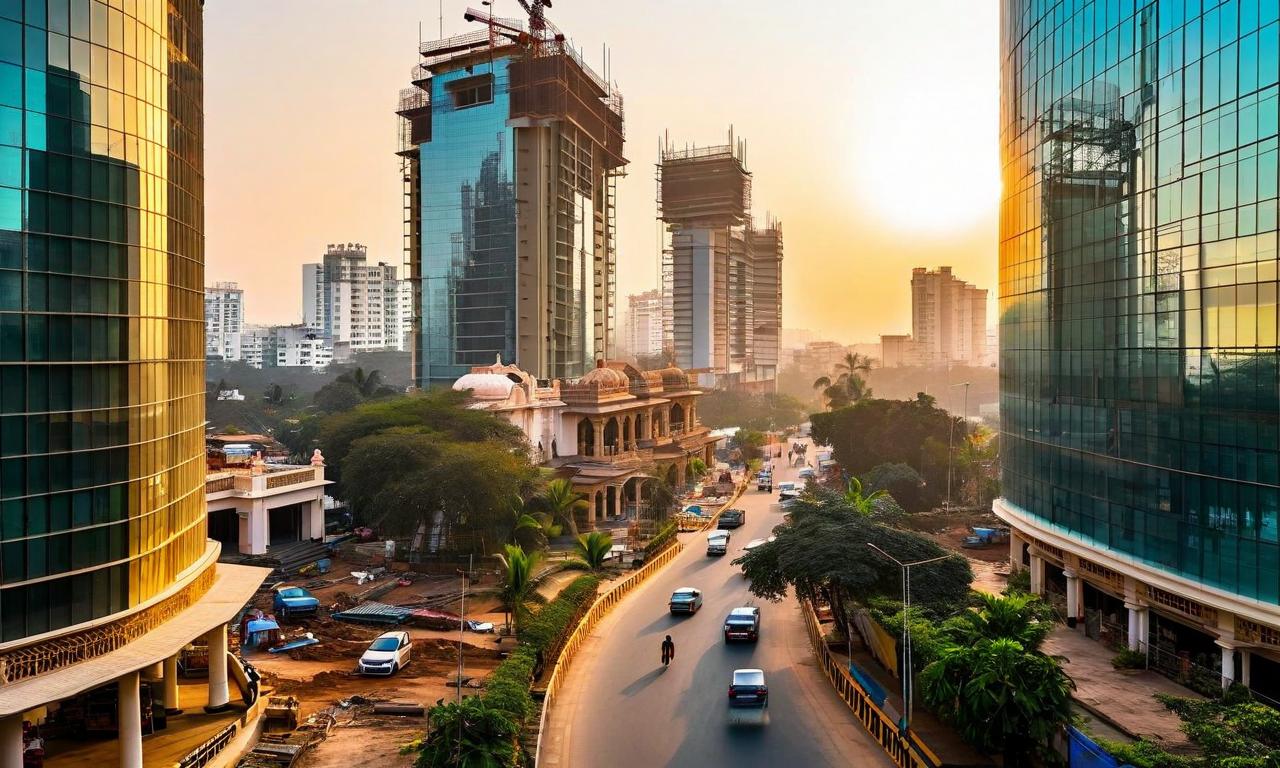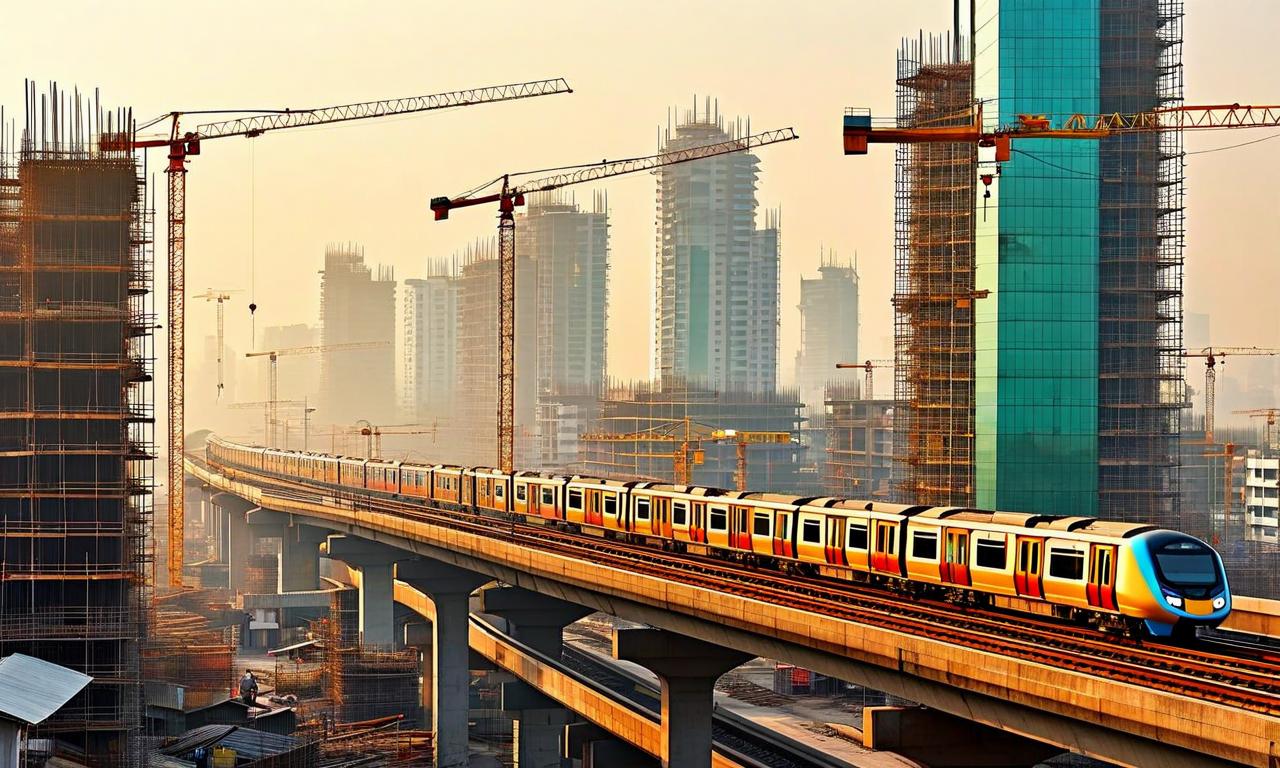Indian Real Estate Sector Booms: Bengaluru Leads Global Office Space Absorption
India's real estate sector is experiencing significant growth across various segments. Commercial space demand in top eight Indian cities is projected to grow at 11% CAGR from 2020 to 2025. Bengaluru has absorbed 75.2 million sq. ft. of office space from CY16 to 9MCY24, outperforming global financial hubs like New York and London. Indian cities offer competitive rental rates, with Bengaluru and Mumbai at $27 per sq. ft. per year, significantly lower than London ($207), New York ($82), and Tokyo ($76). Bengaluru's operating costs are 81% lower than US Tier-II cities, making it attractive for BPM operations and multinational corporations.

*this image is generated using AI for illustrative purposes only.
The Indian real estate sector is experiencing significant growth across various segments, according to a recent report by Equirus Capital. The study highlights strong momentum in residential, commercial, retail, hospitality, and Special Economic Zone (SEZ) segments, driven by rapid urbanization and steady investments.
Commercial Space Demand Surges
The demand for commercial space in India's top eight cities is projected to grow at an impressive 11% Compound Annual Growth Rate (CAGR) between 2020 and 2025. The report indicates that commercial space absorption is expected to increase from 39.3 million square feet in 2020 to 66.4 million square feet by 2025, showcasing the robust growth in the sector.
Bengaluru: A Global Leader in Office Space Absorption
Bengaluru has emerged as a frontrunner in the global office space market, outperforming major international cities. The southern Indian metropolis absorbed a staggering 75.2 million square feet of office space from CY16 to 9MCY24. This performance is particularly impressive when compared to other global financial hubs:
| City | Office Space Absorption (million sq. ft) |
|---|---|
| Bengaluru | 75.2 |
| New York | -5.4 |
| London | -3.0 |
The negative figures for New York and London indicate a contraction in office space absorption, further highlighting Bengaluru's remarkable growth.
Competitive Rental Pricing
Indian cities offer significantly lower rental prices compared to other major global markets, making them attractive destinations for businesses. As of Q3CY24, the office rental rates in key cities are as follows:
| City | Office Rental Rate (per sq. ft per year) |
|---|---|
| Bengaluru | $27 |
| Mumbai | $27 |
| London | $207 |
| New York | $82 |
| Tokyo | $76 |
The competitive pricing in Indian cities, particularly Bengaluru and Mumbai, presents a significant cost advantage for companies looking to establish or expand their operations.
Cost-Effective Operations
Bengaluru stands out not only in terms of office space absorption but also in operational costs. The city's operating costs are 81% lower than Tier-II cities in the United States. The cost per Full-Time Equivalent (FTE) in Bengaluru is just 19, compared to 100 for US Tier-II cities. This substantial cost difference makes Bengaluru an attractive destination for Business Process Management (BPM) operations and multinational corporations seeking to optimize their operational expenses.
The combination of robust growth, competitive pricing, and cost-effective operations positions India's real estate sector, particularly its commercial segment, as a promising market for both domestic and international investors. As urbanization continues and investments remain steady, the sector is poised for further expansion across its various segments.






























